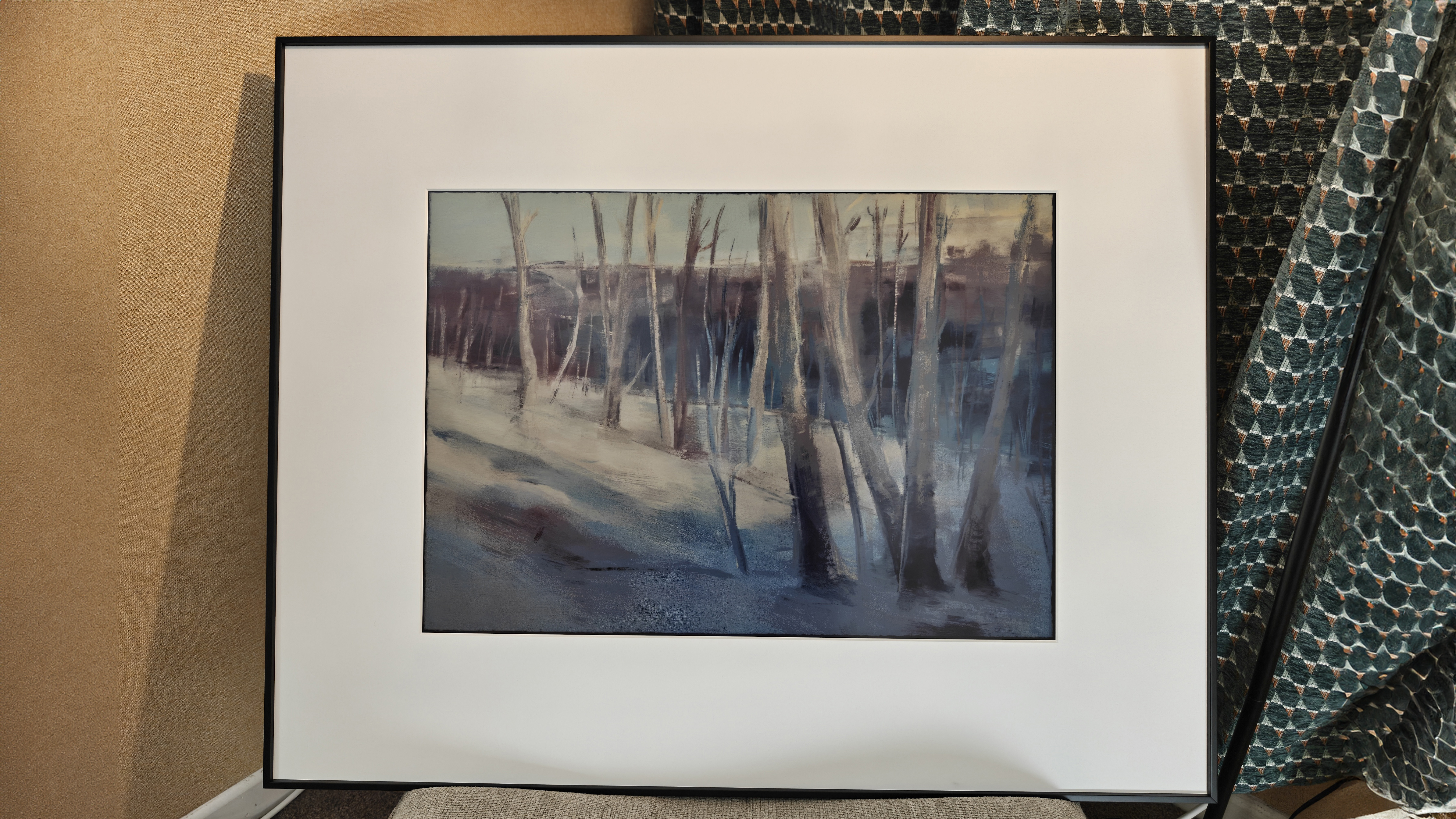10 steps to the perfect business plan for your creative venture

Writing the perfect business plan is one of the most important first steps to launch your own creative venture, but it can also be one of the most daunting. It's the first real stage in properly planning your venture, which can help make your dream design business feel a lot more real, but it can also be hard to know where to start. You might even be tempted to skip this step altogether, but would be a mistake.
The perfect business plan provides clarity and direction for your whole enterprise. It can help you raise cash from banks and or other investors, but even if you're not looking for that, it can help you home in on a gap in the market and work out how your design business will fill it (and turn a profit in the process).
So before you start looking at website wireframes, choosing a logo or shopping around for studio space, it's time to put pen to paper. Your plan should be focused, readable, and most importantly explain why your business will be a success. In the guide below, we'll look at the 10 traditional ingredients that any business plan should cover, with pointers on what to include in each. For more tips on setting up your creative venture, see our guide to how to start a design business and how to improve your graphic design skills.
The perfect business plan: what should it include?
There's no one layout or formula for the perfect business plan, but there are general conventions on what a business plan should include. Exactly how you write it will depend a little on who you're writing for – for example, if you aim to present it to a bank or other potential investors or just to serve as a guide for yourself and colleagues.
The best business plans are usually fairly brief and keep things simple. They succinctly explain what you want to do, how you will get there and what you need to do to reach that goal. While there are no set rules, we'll look at the more traditional elements to include in your business plan below.
01. Write an executive summary
An executive summary essentially summarises your design business in a quick, succinct pitch. This is the part that investors or banks will read first so it needs to be concise and to the point; certainly no more than a couple of pages. Above all it needs to explain your business idea.
The executive summary should include your company name and the reason you chose it, your mission statement, details of your product or service, and basic information about your company’s leadership team, employees, and location. You should also make sure you cover what makes your creative business different, who will you sell your services to and a list of short- and long-term goals. For example, where exactly do you see your business in five or so years?
Daily design news, reviews, how-tos and more, as picked by the editors.
You'll also want to include details on financial goals and growth plans, especially if you plan to seek investors. Set out the turnover you expect to make and the cash you think you'll have at the end of the first year; plus where you'll get money from (grants etc); and how much money you plan to invest yourself.
02. Compose an elevator pitch
An 'elevator pitch' is a much briefer summary of your business that serves to sell it to potential investors, or to clients, in few words. It should be possible to read an elevator pitch in under two minutes. The idea is that you could deliver it to any potential investor you might happen to cross in an elevator, but don't worry if that kind of meeting doesn't tend to happen to you; the pitch will still prove useful for understanding the real selling point of your future business.
Your elevator pitch should include the name of your business, your mission, what your design business will do, who it will do that for and what makes it different. It should be direct, to the point and free from any kind of jargon or waffle.
03. Describe yourself (and any partners)

The next section in the perfect business plan should describe the people behind the business – that means you (and your partners if you have any). You should outline your experience and training, why you want to start your creative business and why you will make it a success.
Do the same for every partner in the business and attach well-crafted résumés (see our guide to the perfect résumé for creatives). The aim of this section is to show investors why you have the know-how to make your business successful, and also to allow you and your partners to take stock of your strengths and how you plan to use them.
04. Define your design business's offering
The next thing to include in the business plan for your design venture is to define the service that you're going to deliver. This should be more specific than you might first think because unless you're planning to launch a fully fledged agency, you're probably not going to be able to cover everything. Are you going to offer graphic design, motion design, web design, mobile, 3D? Are you going to cater to anyone and everyone or will you aim to serve a specific industry or niche?
Remember that any bank or other potential investor will probably know very little about the subject area, so try to describe exactly what the services will entail and what your business's output will be. Don't worry if it sounds patronising or overly simplified. You may know what motion graphics means, but will your bank manager? You should also mention here whether you plan to expand into other services in the future. So if you're starting in graphic design, are you planning to expand to offer full branding services?
05. Describe your clients
The perfect business plan doesn't only describe who you are and what your business will offer; it also offers a very clear description of your target customer. Where are they based? What needs do they have and how will you fulfil them? Asking these questions can be a good test of just how well you understand the client you're aiming at and may reveal a need to do more research. Be sure you really understand your target customer and there's more chance an investor will understand.
You need to describe your typical client and what makes them buy design services, whether you have worked with them before and whether you have any future jobs lined up already. Try to be as detailed as possible. If you've already worked for a specific client in some capacity (maybe in a freelance job) explain this here too since this demonstrates an ability to generate business.
06. Do a SWOT analysis

Remember that your customers aren't the only influence on your business. There are also competitors and the state of the economy as a whole. How big is the market you'll serve? How much is the market expected to grow in the future? Who will be your main competitors now and can you expect more competition in the future? These are some of the questions you'll need to answer in your market analysis.
You should make a simple SWOT analysis (strengths, weaknesses, opportunities, threats) to define the opportunities and threats in your market and compare them to your business’s strengths and weaknesses. Draw up a list of competing businesses, both big and small. Analyses what they do well and what they do badly, and consider what will make your offering different. Opportunities are external factors that could make your business thrive (is the market changing? are clients demanding a certain kind of work that you do well?). Threats are the same but opposite (if you're an illustration studio and budgets dry up, what will you do?).
This research will help to define where there are gaps and where you need to focus (once you've done this, go back through your sections and make sure your business still seems relevant. Any market research you can do in the field (perhaps talking to past clients and getting their take on the market) can be included here as well).
07. Outline your marketing strategy
How are you going to reach potential customers? Word of mouth? Advertising? Promotional material? Social media? Your own website? This is a question that should ideally be answered after carrying out market research to find out how potential clients find and contract the services you'll be providing.
Make sure the marketing strategy you define in your business plan outlines the expected costs for all of these things because, with the possible exception of word of mouth, they're far from free (see finance below).
08. Define your USP
Once you've carried out a SWOT analysis, including analysis of your competitors, you're ready to define your USP, or unique selling point. This is incredibly important to include this in your business plan. It sums up in a nutshell why a client choose your business over another creative business? So what will you do better?
A USP is usually summed up in a single sentence; two at the most. This can be a challenge but the shorter the better since that will make it easier to focus on delivering it.
09. Forecast your budgets

Now it's time to explain how you'll actually make money. Consider details such as how long you spend on projects and how you'll charge for this. If you'll have an hourly rate that state what that will be. You also need to say how you'll get paid (almost certainly on invoice).
You'll also need to define your costs here. This will be of great interest to any potential investors, so pay great attention to it. You'll need to outline both one-off costs such as the equipment you'll need to set up to regular outgoings such as staff, rent (explain where you'll be working from), software subscriptions, bills and insurance.
Calculate your total costs per month and other costs of running the business and define How much income you will need each month to realistically survive as a business, and how much you aim to make. A cash-flow forecast shows how much money will enter and leave your design business and will help identify whether you're going to be able to make things work financially. This can be a sobering moment.
Be pessimistic and realistic. Don't assume you will be working flat out at your maximum rate from the start because it's unlikely that you'll achieve that. It’s better to underestimate how you'll perform and overachieve than the other way around. In this section, you also need to outline any financial needs you have for potential investors. In this case, outline the length of time your request will cover and give a detailed description of how you'll use the funds.
10. Make a backup plan
Finally, what if things don't work out. We've stressed the importance of taking the time to make the perfect business plan, but a plan is a plan and something things turn out differently. This is why it's important that you also have a back-up plan.
If things aren't working out, what will you change in the short or long term in order to turn things around. If you aren't making money, do you plans ready for what you could do to make the business more profitable? Could you sacrifice international clients/pitches for local ones? Could you employ freelancers as and when they are needed instead of hiring a junior designer full-time? Could you downsize your planned studio space or switch to a coworking space (See our guide to the world's coolest coworking spaces for inspiration).
There's a lot to think about when writing a business plan for a creative business, but with careful consideration, it can help you prepare for the undertaking ahead and keep you focused no matter what challenges you face. If you're passionate about making your business a success, writing your plan will be the first step on that path.
Read More:
- The best places to sell design online
- What are NFTs? Non-fungible tokens explained
- NFT marketplaces you should know

Joe is a regular freelance journalist and editor at Creative Bloq. He writes news, features and buying guides and keeps track of the best equipment and software for creatives, from video editing programs to monitors and accessories. A veteran news writer and photographer, he now works as a project manager at the London and Buenos Aires-based design, production and branding agency Hermana Creatives. There he manages a team of designers, photographers and video editors who specialise in producing visual content and design assets for the hospitality sector. He also dances Argentine tango.
- Rob CarneyEditorial, graphic design and publishing lead, Transport for London
